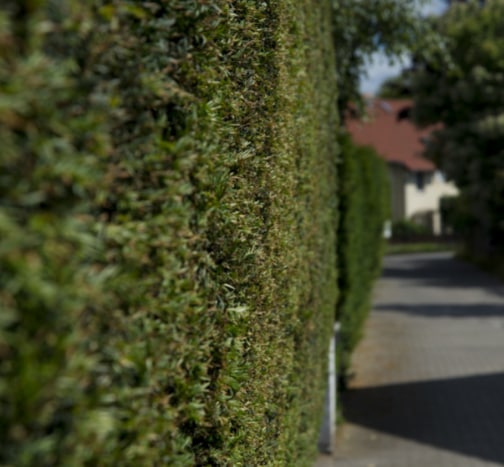Trees can bring natural beauty, privacy, and even environmental benefits to any property—but without regular care, they can just as easily become a source of costly damage. In areas like Maidstone, where residential properties often include mature trees, preventative tree upkeep is essential to maintain safety and protect your home or building structure.
At Maidstone Tree Care, we believe tree maintenance shouldn’t be reactive—it should be proactive. In this guide, we’ll outline how routine care can reduce risk, extend tree life, and safeguard your property from avoidable problems.
Understanding How Trees Pose Risks to Property
Most people don’t associate trees with structural damage until it’s too late. However, the risks are more common than many realise. Overgrown or weakened trees can create a range of problems including:
- Branches falling during high winds
- Roots interfering with foundations or underground drains
- Trees rubbing or leaning against roofs and walls
- Leaf build-up leading to blocked gutters or damp issues
By identifying these risks early and taking regular action, you can significantly reduce the likelihood of emergency repairs or long-term issues.
The Role of Regular Tree Maintenance
Preventative tree care isn’t complex or intrusive—but it needs to be consistent and professionally done. Here are key practices that can prevent property damage:
Crown Reduction and Thinning
Large, overgrown crowns (the top portion of a tree) can make trees top-heavy, unbalanced, or more vulnerable in bad weather. Crown thinning removes selective branches to reduce weight and wind resistance without harming the shape of the tree.
Benefits include:
- Reduced risk of falling branches
- Improved sunlight and airflow around the property
- Less interference with buildings, windows, or cables
It’s particularly useful for trees growing close to homes, driveways, and boundaries.
Root Monitoring and Management
Tree roots naturally spread wide and deep in search of moisture, which can become problematic if they:
- Encroach on foundations or boundary walls
- Block or crack underground drainage pipes
- Disturb paved surfaces or driveways
Having a professional assess root spread—especially on mature or fast-growing species—can help prevent long-term structural issues. Sometimes selective root pruning or physical barriers are enough to redirect growth safely.
Deadwood Removal
Deadwood is exactly what it sounds like: branches or limbs that are no longer alive. These are brittle, weak, and prone to falling—especially in windy or icy conditions.
Regular removal is critical for:
- Avoiding injury to people or damage to parked vehicles
- Preventing harm to fences, sheds, greenhouses, or roofing
- Promoting healthier regrowth and overall tree stability
Deadwood often goes unnoticed from the ground, which is why periodic inspections are a wise investment.
Clearance Pruning
In built-up areas like Maidstone, trees often encroach onto roofs, guttering, or even windows. Clearance pruning involves cutting back branches to create safe, appropriate distances from buildings and other structures.
This helps prevent:
- Roof tile damage from scraping limbs
- Gutter blockages from heavy leaf fall
- Pests accessing your roof from overhanging limbs
Even small trees can benefit from thoughtful pruning to prevent these creeping hazards.
Timing Matters: When to Schedule Tree Work
It’s not just what you do—but when you do it—that makes the difference. The best time to assess and maintain trees is before storm seasons, ideally in late winter or early spring, when tree structures are easier to examine and weather conditions are more stable.
Key times to act:
- After heavy storms or winds
- When trees show signs of leaning or splitting
- If large branches hang over key areas like roofs, cars, or footpaths
- When neighbours raise concerns about boundaries or overhang
Regular maintenance creates a safer, healthier environment for both property owners and surrounding homes.
What to Look Out for Between Visits
While tree care should always be handled by professionals, property owners can still perform visual checks throughout the year. Keep an eye out for:
- Cracks in large limbs or visible splits in trunks
- Excessive leaning or exposed roots
- Sudden leaf loss or dieback at the crown
- Signs of decay like fungi, oozing sap, or wood dust
- Branches touching buildings, phone lines, or neighbouring properties
Spotting these early allows for swift, targeted intervention before damage occurs.
Conclusion
Your trees should be an asset, not a liability. With simple, consistent upkeep, the risk of property damage can be drastically reduced—without needing drastic tree removals or emergency repairs. Whether it’s strategic pruning, deadwood removal, or seasonal inspections, proactive care ensures your trees remain safe, attractive, and well-balanced.
At Maidstone Tree Care, we specialise in tree maintenance tailored to the unique conditions of Kent gardens and properties. If you want to protect your home and keep your trees healthy long-term, our team is ready to help. Get in touch today and take the first step toward safer, smarter tree care.
Call us on: 01622 234592
Click here to find out more about Maidstone Tree Care
Click here to complete our contact form and see how we can help with your trees needs.
